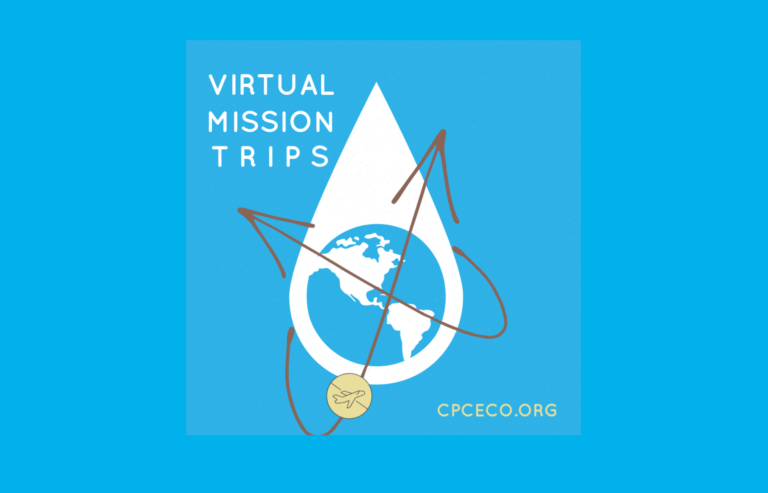 Uncategorized
Uncategorized
In light of the multiple thousands of denominations existing over and against Je...
 Uncategorized
Uncategorized
By: ECO Team
We were in a quandary. By mid-April, the Covid-19 pandemic began impacting missionaries’ furloughs and our short-term teams. Plans got postponed, postponed again, then ultimately cancelled. The loss of in-person gathering was disappointing, but the potential for far-reaching implications was especially troubling.
A recent study by the Barna Group (The Future of Missions, 2020) noted relationships with missionaries as a key factor for young adults to take next steps toward missions. Whether considering a call to the mission field or giving prayer and financial support to missions, connection with a missionary emerged as a significant motivator. In these non-travel days, how can the church lead the way to build these relationships?
Connecting our congregation with global partners is a critical aspect of my role as a missions leader. We needed to figure out new ways for missionaries and congregations to come together. Enter the internet.
Quarantine life and ongoing pandemic restrictions have brought an unprecedented embrace of technology. Suddenly the internet became a viable option for an entire congregation to utilize. So then, working with our missionaries and our ministry team, we developed virtual mission trips (VMT) to three countries. We received such encouraging feedback, more trips are in the works. Each VMT was interactive, intergenerational, and educational. And, of course, we had fun together!
Pre-trip Arrangements
Preparations for each trip began with our mission partners. Through emails and video calls, we brainstormed a virtual itinerary that would highlight the family, their ministry activities, and the communities they served.
Due to unstable (or non-existent) internet and electric connections, we decided to use pre-recorded videos. Our missionaries personalized videos with a greeting to our church family, including commenting on previous teams or their last furlough visit with us. Other videos included: a walk around the town, testimonies of how God is at work, demonstration of a local skill, and a lesson on a craft or game. The videos ranged between 3-5 minutes.
Missionaries sent their videos in mp4 files. I uploaded them into our church’s Vimeo account, where I could adjust the privacy and download settings. Then, using a video conferencing platform that allowed a chat window and screen sharing, I set up our VMT.
Our virtual mission trips were free, but people had to sign-up. We needed the number of trip participants because we assembled “supply boxes” for each registered household. The week before each VMT, families came to the church office to pick up their box. Boxes included a fact sheet about the country, a prayer card, ingredients for the food segment, and supplies for the craft or game. Out-of-town VMT participants could download the fact sheet and prayer card and could purchase their supplies for the hands-on segments from an emailed list.
The Trip
The virtual mission trips were essentially fast-paced, 90-minute webinars. We interspersed videos with conversational segments to create an experience on the culture, cuisine, crafts, and Q & A with missionaries.
Each VMT began with a video of the culture and geography of the country. The internet offers access to a wide range of free educational videos. The YouTube channel Geography Now, for example, has lively overviews of many countries.
Hands-on activities enabled us to create interactive segments. We chose recipes, games, and crafts by availability of materials in both the missionaries’ country and in the US. Our missionaries in Myanmar, for example, taught rubber band games. We made tortillas with our Guatemalan missionaries and learned a song in Nyanja with children in Zambia.
We were grateful the internet cooperated and the missionaries joined us on their VMTs. The live Q & A segments were a highlight in each trip. Missionaries and participants connected through conversations ranging from the impact of Covid-19 to miraculous answers to prayer.
The Debrief
The day after the VMT, I emailed all participants. The “debrief” included a brief recap of the trip along with prayer updates and our team photo (screenshots stitched together!). I also included links to the missionary’s website and to the recording of the VMT.
I am hopeful participants will sign-up for newsletters and will connect further with the missionary. I also encouraged participants to share the VMT recording with friends and family, so they too can meet a new missionary.
If you are interested in exploring a VMT, links to the recordings and handouts for our trips are on our church website (https://centrevillepres.com/virtual-mission-trips/). I would love any feedback and suggestions (sharon@cpceco.org).
Conclusion
Travel and social distance restrictions will likely prevent in-person interactions with missionaries for months to come, if not longer. Despite the uncertainties in which we now live, VMTs offer a creative way to bring God’s global work into the living rooms of our congregations. It is well worth the efforts!
Sharon R Hoover
Centreville Presbyterian Church (Virginia)
 Uncategorized
Uncategorized
In light of the multiple thousands of denominations existing over and against Je...
 Uncategorized
Uncategorized
My first pastoral call was to the First Presbyterian Church of Winnfield, a litt...
 Uncategorized
Uncategorized
This semester, I’m teaching “The Holy Spirit and the Church.” Our primary textbo...